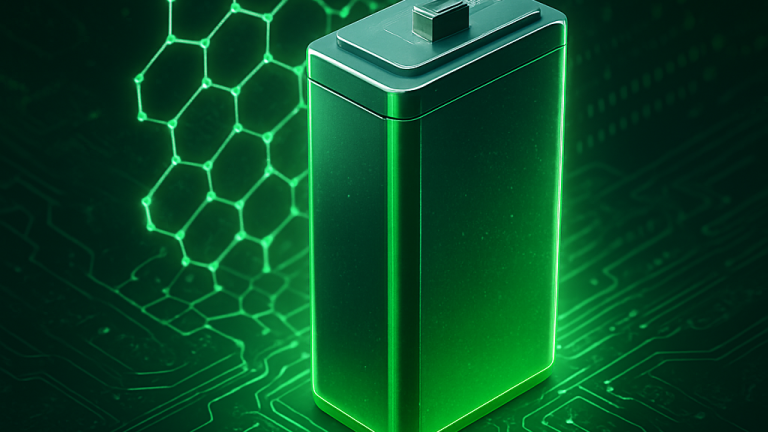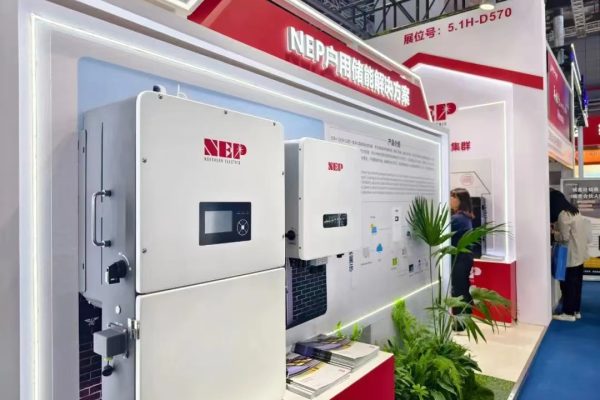A Technology Comparison for Installers, Exporters, and Energy Professionals
For years, lithium-ion (Li-ion) batteries have dominated the energy storage market — from smartphones to electric vehicles (EVs) to residential PV systems.
But now, a new contender is gaining attention in research labs and high-tech startups:
⚡ Graphene-enhanced batteries.
Is this just hype? Or is graphene really going to replace lithium-ion as the core of future energy storage?
In this article, we’ll compare graphene vs traditional lithium-ion batteries from a technical, commercial, and application perspective — so you can better advise your clients and prepare for upcoming trends.
🔍 What Is Graphene?
Graphene is a single layer of carbon atoms arranged in a hexagonal lattice — essentially, a two-dimensional sheet of graphite.
Why is it special?
- 200× stronger than steel
- Best electrical conductor known
- Ultra-light and flexible
- High surface area for ions
In batteries, graphene is usually combined with lithium-ion technology (not entirely replacing it), improving conductivity, charge speed, and thermal properties.
⚖️ Head-to-Head Comparison
| Feature | Lithium-Ion | Graphene-Enhanced |
|---|---|---|
| Energy density | 150–250 Wh/kg | 250–300+ Wh/kg (projected) |
| Charging speed | 1–2 hours | 5–15 minutes (lab tested) |
| Cycle life | 2,000–6,000 cycles | 10,000+ cycles (potential) |
| Thermal stability | Moderate (risk of fire) | High (runs cooler) |
| Cost (today) | $100–$150/kWh | $300–$600/kWh (early stage) |
| Market maturity | Mass production | Pilot/early commercial stage |
✅ Conclusion: Graphene offers major performance gains — but cost and supply chain are still barriers.
🔋 Use Cases: Where Graphene Might Shine
| Sector | Why It Matters |
|---|---|
| Electric Vehicles | Ultra-fast charging (5–10 min full charge) |
| Consumer Electronics | Lightweight + longer battery life |
| Grid Storage / ESS | Longer cycle life, higher safety |
| Military / Aerospace | Heat resistance, weight savings |
| High-temp environments | Graphene handles >100°C safely |
For residential solar+storage? Still early. But in 3–5 years, graphene-enhanced ESS modules may start appearing in premium systems.
🏗 Types of Graphene Batteries
Most products today use graphene as an additive, not a replacement:
1. Graphene-Li-ion Hybrid
- Uses graphene in the anode
- Faster ion transport = quicker charge
- Still uses lithium chemistry
2. Graphene Supercapacitor Hybrid
- Focus on ultra-fast charging/discharging
- Lower energy density than Li-ion
- Useful for peak shaving or backup, not long-term storage
3. Pure Graphene Batteries (Lab stage)
- Fully graphene-based electrodes
- No lithium needed
- Still under development, not commercially viable yet
🚀 Companies Driving Graphene Battery Tech
| Company | Country | Focus Area |
|---|---|---|
| Skeleton Technologies | Germany | Graphene supercapacitors |
| Nanotech Energy | USA | Non-flammable graphene Li-ion |
| Real Graphene USA | USA/China | Power banks, e-mobility |
| Grabat (Graphenano) | Spain | EV cells |
| Huawei | China | Graphene thermal control in phones |
Note: Many “graphene battery” claims online are overhyped — real products are still limited and expensive.
🧠 For Installers & Integrators: Should You Care Now?
Short answer: Not yet — but stay informed.
Why:
- Graphene battery packs are not widely certified (UL/IEC)
- Cost is too high for most residential or SME projects
- Ecosystem support (BMS, inverter compatibility) is limited
However:
- For exporters targeting EV startups, telecom, or military, graphene packs could be a niche opportunity
- For grid-scale pilot projects or R&D, offering graphene-based prototypes may attract investment
🔄 How Graphene May Disrupt Li-ion (Eventually)
| Impact Area | Change |
|---|---|
| Charging Infrastructure | Faster charging = fewer chargers needed |
| Battery Maintenance | Less heat = lower risk, longer life |
| System Design | Lighter weight = easier to install and transport |
| Warranty Terms | More cycles = longer warranty periods |
| ESS ROI | Lower long-term replacement cost |
Expect graphene+LiFePO₄ hybrids to appear first in UPS and commercial storage markets around 2026–2027.
⚠️ Watch for Greenwashing
Some sellers claim to offer “graphene batteries”, but these are often:
- Standard Li-ion with trace graphene
- No performance data or certification
- 2× the price, no real benefit
✅ Ask for:
- Third-party testing reports
- Cycle life and charge speed proof
- Warranty details
- Certification (UL, CE, UN38.3, IEC62619)
🔚Not a Replacement (Yet), but a Powerful Enhancement
Graphene won’t kill lithium-ion — it will likely elevate it.
For now, LiFePO₄ remains the safest, most cost-effective choice for PV + ESS systems. But as graphene becomes cheaper and scalable, expect it to:
- Improve charging efficiency
- Enable higher power density
- Reduce thermal management costs
Smart installers and exporters should watch this space and be ready to pivot when graphene solutions become mass-market ready.
💡 The future isn’t about replacing lithium — it’s about upgrading it.









